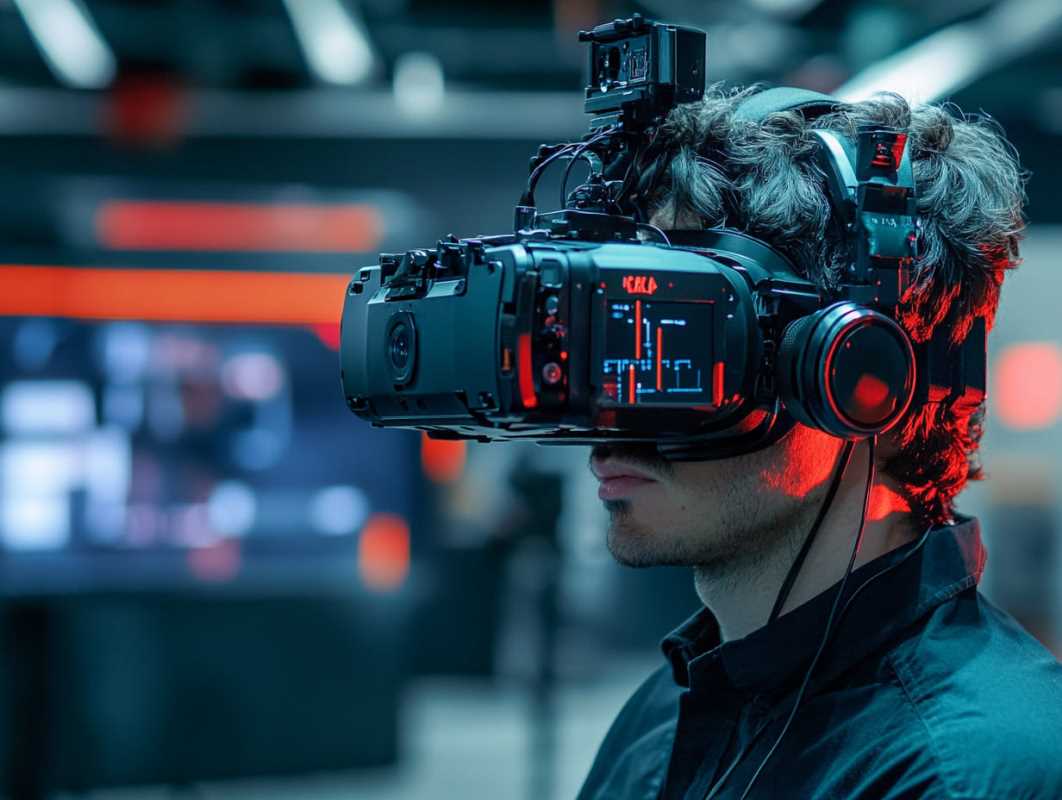Virtual reality (VR) technology has evolved dramatically since its inception, revolutionizing how we interact with digital environments and opening up new possibilities across multiple industries. Initially popularized in gaming, VR has applications in education, healthcare, entertainment, real estate, and more. Its immersive nature offers innovative ways to learn, treat medical conditions, and experience entertainment. As technology advances, it promises to further reshape industries and enhance our everyday lives. This article delves into the history and evolution of VR, explores its current applications, and looks at its future potential, highlighting its transformative impact on society and beyond.
A Brief History of Virtual Reality
The concept of virtual reality is not as new as one might think. Its roots date back to the 1950s:
- The Early Days:
- In 1957, Morton Heilig introduced the Sensorama, a multisensory machine designed to immerse users in a cinematic experience using visuals, sound, and smell.
- Ivan Sutherland invented the first head-mounted display (HMD) in the 1960s, known as the "Sword of Damocles."
- The 1980s and 1990s:
- Advancements in computing power enabled more sophisticated VR systems. Companies like VPL Research began developing data gloves and VR headsets.
- Although promising, early VR systems were costly and limited in capabilities, confining their use to research and specialized applications.
- Modern VR:
- The 2010s marked a turning point with the launch of consumer-friendly VR devices like the Oculus Rift, HTC Vive, and PlayStation VR.
- VR became more accessible, with significant investments from tech giants like Facebook (now Meta), Google, and Sony.
Applications of Virtual Reality
1. Healthcare and Therapy
Virtual reality has made remarkable contributions to the healthcare industry:
- Medical Training:
- VR simulations allow medical professionals to practice surgeries in risk-free environments, enhancing skills and confidence.
- Example: Platforms like Osso VR provide realistic surgical training modules.
- Therapeutic Use:
- VR exposure therapy helps treat phobias and post-traumatic stress disorder (PTSD) by immersing patients in controlled virtual environments.
- In pain management, VR distracts patients during medical procedures or chronic pain episodes.
2. Education and Learning
Education has witnessed a revolution with the integration of VR:
- Virtual Field Trips:
- Students can explore ancient civilizations, outer space, or ocean depths without leaving their classrooms.
- Example: Google Expeditions offers immersive experiences for students to learn interactively.
- Enhanced Engagement:
- VR makes abstract concepts tangible, enabling learners to grasp complex ideas in subjects like science and engineering.
- Simulation-based training in aviation and mechanics is now safer and more effective.
3. Entertainment and Gaming
The entertainment industry, particularly gaming, has been at the forefront of VR adoption:
- Immersive Gaming:
- VR games transport players to fantastical realms, enabling real-time interaction with dynamic environments.
- Popular titles like Beat Saber and Half-Life: Alyx showcase the possibilities of VR gaming.
- Cinematic Experiences:
- VR films offer 360-degree storytelling, allowing viewers to be part of the narrative.
4. Real Estate and Tourism
VR is transforming how people explore spaces and destinations:
- Virtual Tours:
- Prospective buyers can tour properties remotely, saving time and resources.
- Example: Matterport provides 3D walkthroughs of real estate listings.
- Travel Experiences:
- VR allows users to visit landmarks or experience cultural festivals without physical travel, fostering global exploration from home.
5. Workplace Training and Development
Virtual reality is becoming a staple in corporate training programs:
- Employee Training:
- VR simulations prepare employees for high-risk scenarios like firefighting or equipment operation.
- Example: Walmart uses VR to train staff in customer service and emergency protocols.
- Collaboration:
- Virtual offices and meeting spaces, like Meta’s Horizon Workrooms, enable remote teams to collaborate in shared virtual environments.
Technological Advancements in VR
Improved Hardware
Recent innovations have made VR devices more user-friendly and affordable:
- Standalone Headsets:
- Devices like the Oculus Quest eliminate the need for external hardware, offering wireless, all-in-one solutions.
- Enhanced Displays:
- High-resolution screens and increased field-of-view capabilities provide more realistic visuals.
- Haptic Feedback:
- Gloves and suits equipped with sensors allow users to "feel" virtual objects, enhancing immersion.
Software Innovations
The software driving VR has also seen tremendous growth:
- Real-Time Rendering:
- Advanced algorithms enable lifelike graphics and seamless interactivity.
- AI Integration:
- Artificial intelligence powers intelligent virtual characters and adaptive environments.
Cloud-Based VR
Cloud technology is set to revolutionize VR:
- Benefits:
- Reduced hardware requirements for users.
- Access to high-quality VR content from anywhere with minimal latency.
Challenges Facing Virtual Reality
Despite its advancements, VR still faces several hurdles:
- Cost:
- High-quality VR systems remain expensive, limiting accessibility for many users.
- Technical Barriers:
- Issues like motion sickness and bulky hardware deter widespread adoption.
- Content Creation:
- Developing engaging and realistic VR content is time-consuming and resource-intensive.
- Ethical Concerns:
- With increased immersion comes the potential for misuse, such as creating hyper-realistic simulations that blur reality.
The Future of Virtual Reality
The future of VR is brimming with potential. Key trends include:
1. Mixed Reality (MR)
Combining VR and augmented reality (AR) elements, mixed reality allows digital and physical worlds to coexist. For example:
- Architects can overlay virtual designs onto physical construction sites.
- Gamers can interact with virtual characters in their living rooms.
2. Social VR
Social interactions are moving into the virtual realm:
- Virtual Events:
- Platforms like VRChat and AltspaceVR host virtual meetups, concerts, and conferences.
- Virtual Commerce:
- Users can shop in virtual malls and try on clothes digitally before purchasing.
3. Industry-Specific Applications
Future VR developments are expected to target niche industries:
- Healthcare:
- Personalized rehabilitation programs and remote consultations.
- Military:
- Realistic combat training simulations.
- Education:
- Customizable curriculums tailored to individual learning styles.
How VR Is Shaping Society
The societal impact of VR is profound:
- Inclusion:
- VR bridges gaps by providing access to experiences previously unavailable to people with disabilities or those in remote areas.
- Cultural Preservation:
- Virtual experiences can preserve and share endangered cultural practices and historical sites.
- Workforce Transformation:
- As VR training becomes mainstream, workers in high-risk fields can gain expertise in safe environments.
Actionable Insights for Adopting VR
For individuals and organizations looking to embrace VR:
- Start Small:
- Explore consumer-grade VR devices to understand their capabilities.
- Focus on Training:
- Invest in VR-based training to enhance skill development.
- Collaborate with Experts:
- Partner with VR developers to create tailored solutions.
Since its inception, virtual reality has transformed industries and enriched lives. As technology evolves, VR’s applications will expand, offering new ways to work, play, and connect. From revolutionizing education and healthcare to redefining entertainment and tourism, VR promises an exciting future. Embracing this transformative technology will unlock endless possibilities, reshaping how we interact with the digital and physical worlds.
 (Image source: Midjourney)
(Image source: Midjourney) 





